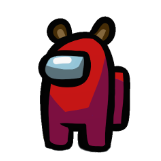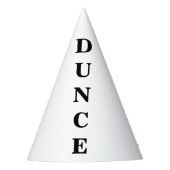-
Recently Browsing
- No registered users viewing this page.
-
Posts
-
Now it gets stuck at "Preparing start region for dimension overworld" once i was able to generate a full customzied json. Any insights?
-
By TileEntity · Posted
Add crash-reports with sites like https://paste.ee/ and paste the link to it here Make a test without valhelsia_structures -
My game crash before main screen load crash log: ---- Minecraft Crash Report ---- // I let you down. Sorry Time: 04.05.2024, 11:48 Description: Initializing game org.spongepowered.asm.mixin.transformer.throwables.MixinTransformerError: An unexpected critical error was encountered at org.spongepowered.asm.mixin.transformer.MixinProcessor.applyMixins(MixinProcessor.java:392) ~[mixin-0.8.5.jar:0.8.5+Jenkins-b310.git-155314e6e91465dad727e621a569906a410cd6f4] {} at org.spongepowered.asm.mixin.transformer.MixinTransformer.transformClass(MixinTransformer.java:250) ~[mixin-0.8.5.jar:0.8.5+Jenkins-b310.git-155314e6e91465dad727e621a569906a410cd6f4] {} at org.spongepowered.asm.service.modlauncher.MixinTransformationHandler.processClass(MixinTransformationHandler.java:131) ~[mixin-0.8.5.jar:0.8.5+Jenkins-b310.git-155314e6e91465dad727e621a569906a410cd6f4] {} at org.spongepowered.asm.launch.MixinLaunchPluginLegacy.processClass(MixinLaunchPluginLegacy.java:131) ~[mixin-0.8.5.jar:0.8.5+Jenkins-b310.git-155314e6e91465dad727e621a569906a410cd6f4] {} at cpw.mods.modlauncher.serviceapi.ILaunchPluginService.processClassWithFlags(ILaunchPluginService.java:156) ~[modlauncher-9.1.3.jar:9.1.3+9.1.3+main.9b69c82a] {} at cpw.mods.modlauncher.LaunchPluginHandler.offerClassNodeToPlugins(LaunchPluginHandler.java:88) ~[modlauncher-9.1.3.jar:?] {} at cpw.mods.modlauncher.ClassTransformer.transform(ClassTransformer.java:120) ~[modlauncher-9.1.3.jar:?] {} at cpw.mods.modlauncher.TransformingClassLoader.maybeTransformClassBytes(TransformingClassLoader.java:50) ~[modlauncher-9.1.3.jar:?] {} at cpw.mods.cl.ModuleClassLoader.readerToClass(ModuleClassLoader.java:113) ~[securejarhandler-1.0.8.jar:?] {} at cpw.mods.cl.ModuleClassLoader.lambda$findClass$15(ModuleClassLoader.java:219) ~[securejarhandler-1.0.8.jar:?] {} at cpw.mods.cl.ModuleClassLoader.loadFromModule(ModuleClassLoader.java:229) ~[securejarhandler-1.0.8.jar:?] {} at cpw.mods.cl.ModuleClassLoader.findClass(ModuleClassLoader.java:219) ~[securejarhandler-1.0.8.jar:?] {} at cpw.mods.cl.ModuleClassLoader.loadClass(ModuleClassLoader.java:135) ~[securejarhandler-1.0.8.jar:?] {} at java.lang.ClassLoader.loadClass(ClassLoader.java:520) ~[?:?] {} at net.minecraft.client.renderer.block.BlockRenderDispatcher.<init>(BlockRenderDispatcher.java:50) ~[client-1.18.2-20220404.173914-srg.jar%2390!/:?] {re:classloading,xf:OptiFine:default} at net.minecraft.client.Minecraft.<init>(Minecraft.java:501) ~[client-1.18.2-20220404.173914-srg.jar%2390!/:?] {re:mixin,pl:accesstransformer:B,pl:runtimedistcleaner:A,re:classloading,pl:accesstransformer:B,pl:mixin:APP:architectury.mixins.json:MixinMinecraft,pl:mixin:A,pl:runtimedistcleaner:A} at net.minecraft.client.main.Main.main(Main.java:169) ~[client-1.18.2-20220404.173914-srg.jar%2390!/:?] {re:classloading,pl:runtimedistcleaner:A} at jdk.internal.reflect.NativeMethodAccessorImpl.invoke0(Native Method) ~[?:?] {} at jdk.internal.reflect.NativeMethodAccessorImpl.invoke(NativeMethodAccessorImpl.java:77) ~[?:?] {} at jdk.internal.reflect.DelegatingMethodAccessorImpl.invoke(DelegatingMethodAccessorImpl.java:43) ~[?:?] {} at java.lang.reflect.Method.invoke(Method.java:568) ~[?:?] {} at net.minecraftforge.fml.loading.targets.CommonClientLaunchHandler.lambda$launchService$0(CommonClientLaunchHandler.java:31) ~[fmlloader-1.18.2-40.2.21.jar%2318!/:?] {} at cpw.mods.modlauncher.LaunchServiceHandlerDecorator.launch(LaunchServiceHandlerDecorator.java:37) [modlauncher-9.1.3.jar%235!/:?] {} at cpw.mods.modlauncher.LaunchServiceHandler.launch(LaunchServiceHandler.java:53) [modlauncher-9.1.3.jar%235!/:?] {} at cpw.mods.modlauncher.LaunchServiceHandler.launch(LaunchServiceHandler.java:71) [modlauncher-9.1.3.jar%235!/:?] {} at cpw.mods.modlauncher.Launcher.run(Launcher.java:106) [modlauncher-9.1.3.jar%235!/:?] {} at cpw.mods.modlauncher.Launcher.main(Launcher.java:77) [modlauncher-9.1.3.jar%235!/:?] {} at cpw.mods.modlauncher.BootstrapLaunchConsumer.accept(BootstrapLaunchConsumer.java:26) [modlauncher-9.1.3.jar%235!/:?] {} at cpw.mods.modlauncher.BootstrapLaunchConsumer.accept(BootstrapLaunchConsumer.java:23) [modlauncher-9.1.3.jar%235!/:?] {} at cpw.mods.bootstraplauncher.BootstrapLauncher.main(BootstrapLauncher.java:149) [bootstraplauncher-1.0.0.jar:?] {} Caused by: org.spongepowered.asm.mixin.throwables.MixinApplyError: Mixin [valhelsia_structures.mixins.json:BlockModelRendererMixin] from phase [DEFAULT] in config [valhelsia_structures.mixins.json] FAILED during APPLY at org.spongepowered.asm.mixin.transformer.MixinProcessor.handleMixinError(MixinProcessor.java:636) ~[mixin-0.8.5.jar:0.8.5+Jenkins-b310.git-155314e6e91465dad727e621a569906a410cd6f4] {} at org.spongepowered.asm.mixin.transformer.MixinProcessor.handleMixinApplyError(MixinProcessor.java:588) ~[mixin-0.8.5.jar:0.8.5+Jenkins-b310.git-155314e6e91465dad727e621a569906a410cd6f4] {} at org.spongepowered.asm.mixin.transformer.MixinProcessor.applyMixins(MixinProcessor.java:379) ~[mixin-0.8.5.jar:0.8.5+Jenkins-b310.git-155314e6e91465dad727e621a569906a410cd6f4] {} ... 29 more Caused by: org.spongepowered.asm.mixin.injection.throwables.InvalidInjectionException: Critical injection failure: @ModifyVariable annotation on valhelsia_renderModelFaceFlat could not find any targets matching 'Lnet/minecraft/client/renderer/block/ModelBlockRenderer;m_111001_(Lnet/minecraft/world/level/BlockAndTintGetter;Lnet/minecraft/world/level/block/state/BlockState;Lnet/minecraft/core/BlockPos;IIZLcom/mojang/blaze3d/vertex/PoseStack;Lcom/mojang/blaze3d/vertex/VertexConsumer;Ljava/util/List;Ljava/util/BitSet;)V' in net.minecraft.client.renderer.block.ModelBlockRenderer. Using refmap valhelsia_structures.refmap.json [PREINJECT Applicator Phase -> valhelsia_structures.mixins.json:BlockModelRendererMixin -> Prepare Injections -> -> localvar$zbg000$valhelsia_renderModelFaceFlat(ILnet/minecraft/world/level/BlockAndTintGetter;Lnet/minecraft/world/level/block/state/BlockState;Lnet/minecraft/core/BlockPos;)I -> Parse] at org.spongepowered.asm.mixin.injection.struct.InjectionInfo.validateTargets(InjectionInfo.java:656) ~[mixin-0.8.5.jar:0.8.5+Jenkins-b310.git-155314e6e91465dad727e621a569906a410cd6f4] {} at org.spongepowered.asm.mixin.injection.struct.InjectionInfo.findTargets(InjectionInfo.java:587) ~[mixin-0.8.5.jar:0.8.5+Jenkins-b310.git-155314e6e91465dad727e621a569906a410cd6f4] {} at org.spongepowered.asm.mixin.injection.struct.InjectionInfo.readAnnotation(InjectionInfo.java:330) ~[mixin-0.8.5.jar:0.8.5+Jenkins-b310.git-155314e6e91465dad727e621a569906a410cd6f4] {} at org.spongepowered.asm.mixin.injection.struct.InjectionInfo.<init>(InjectionInfo.java:316) ~[mixin-0.8.5.jar:0.8.5+Jenkins-b310.git-155314e6e91465dad727e621a569906a410cd6f4] {} at org.spongepowered.asm.mixin.injection.struct.InjectionInfo.<init>(InjectionInfo.java:308) ~[mixin-0.8.5.jar:0.8.5+Jenkins-b310.git-155314e6e91465dad727e621a569906a410cd6f4] {} at org.spongepowered.asm.mixin.injection.struct.ModifyVariableInjectionInfo.<init>(ModifyVariableInjectionInfo.java:45) ~[mixin-0.8.5.jar:0.8.5+Jenkins-b310.git-155314e6e91465dad727e621a569906a410cd6f4] {} at jdk.internal.reflect.NativeConstructorAccessorImpl.newInstance0(Native Method) ~[?:?] {} at jdk.internal.reflect.NativeConstructorAccessorImpl.newInstance(NativeConstructorAccessorImpl.java:77) ~[?:?] {} at jdk.internal.reflect.DelegatingConstructorAccessorImpl.newInstance(DelegatingConstructorAccessorImpl.java:45) ~[?:?] {} at java.lang.reflect.Constructor.newInstanceWithCaller(Constructor.java:499) ~[?:?] {} at java.lang.reflect.Constructor.newInstance(Constructor.java:480) ~[?:?] {} at org.spongepowered.asm.mixin.injection.struct.InjectionInfo$InjectorEntry.create(InjectionInfo.java:149) ~[mixin-0.8.5.jar:0.8.5+Jenkins-b310.git-155314e6e91465dad727e621a569906a410cd6f4] {} at org.spongepowered.asm.mixin.injection.struct.InjectionInfo.parse(InjectionInfo.java:708) ~[mixin-0.8.5.jar:0.8.5+Jenkins-b310.git-155314e6e91465dad727e621a569906a410cd6f4] {} at org.spongepowered.asm.mixin.transformer.MixinTargetContext.prepareInjections(MixinTargetContext.java:1311) ~[mixin-0.8.5.jar:0.8.5+Jenkins-b310.git-155314e6e91465dad727e621a569906a410cd6f4] {} at org.spongepowered.asm.mixin.transformer.MixinApplicatorStandard.prepareInjections(MixinApplicatorStandard.java:1042) ~[mixin-0.8.5.jar:0.8.5+Jenkins-b310.git-155314e6e91465dad727e621a569906a410cd6f4] {} at org.spongepowered.asm.mixin.transformer.MixinApplicatorStandard.applyMixin(MixinApplicatorStandard.java:393) ~[mixin-0.8.5.jar:0.8.5+Jenkins-b310.git-155314e6e91465dad727e621a569906a410cd6f4] {} at org.spongepowered.asm.mixin.transformer.MixinApplicatorStandard.apply(MixinApplicatorStandard.java:325) ~[mixin-0.8.5.jar:0.8.5+Jenkins-b310.git-155314e6e91465dad727e621a569906a410cd6f4] {} at org.spongepowered.asm.mixin.transformer.TargetClassContext.apply(TargetClassContext.java:383) ~[mixin-0.8.5.jar:0.8.5+Jenkins-b310.git-155314e6e91465dad727e621a569906a410cd6f4] {} at org.spongepowered.asm.mixin.transformer.TargetClassContext.applyMixins(TargetClassContext.java:365) ~[mixin-0.8.5.jar:0.8.5+Jenkins-b310.git-155314e6e91465dad727e621a569906a410cd6f4] {} at org.spongepowered.asm.mixin.transformer.MixinProcessor.applyMixins(MixinProcessor.java:363) ~[mixin-0.8.5.jar:0.8.5+Jenkins-b310.git-155314e6e91465dad727e621a569906a410cd6f4] {} ... 29 more A detailed walkthrough of the error, its code path and all known details is as follows: --------------------------------------------------------------------------------------- -- Head -- Thread: Render thread Stacktrace: at org.spongepowered.asm.mixin.transformer.MixinProcessor.applyMixins(MixinProcessor.java:392) ~[mixin-0.8.5.jar:0.8.5+Jenkins-b310.git-155314e6e91465dad727e621a569906a410cd6f4] {} at org.spongepowered.asm.mixin.transformer.MixinTransformer.transformClass(MixinTransformer.java:250) ~[mixin-0.8.5.jar:0.8.5+Jenkins-b310.git-155314e6e91465dad727e621a569906a410cd6f4] {} at org.spongepowered.asm.service.modlauncher.MixinTransformationHandler.processClass(MixinTransformationHandler.java:131) ~[mixin-0.8.5.jar:0.8.5+Jenkins-b310.git-155314e6e91465dad727e621a569906a410cd6f4] {} at org.spongepowered.asm.launch.MixinLaunchPluginLegacy.processClass(MixinLaunchPluginLegacy.java:131) ~[mixin-0.8.5.jar:0.8.5+Jenkins-b310.git-155314e6e91465dad727e621a569906a410cd6f4] {} at cpw.mods.modlauncher.serviceapi.ILaunchPluginService.processClassWithFlags(ILaunchPluginService.java:156) ~[modlauncher-9.1.3.jar:9.1.3+9.1.3+main.9b69c82a] {} at cpw.mods.modlauncher.LaunchPluginHandler.offerClassNodeToPlugins(LaunchPluginHandler.java:88) ~[modlauncher-9.1.3.jar:?] {} at cpw.mods.modlauncher.ClassTransformer.transform(ClassTransformer.java:120) ~[modlauncher-9.1.3.jar:?] {} at cpw.mods.modlauncher.TransformingClassLoader.maybeTransformClassBytes(TransformingClassLoader.java:50) ~[modlauncher-9.1.3.jar:?] {} at cpw.mods.cl.ModuleClassLoader.readerToClass(ModuleClassLoader.java:113) ~[securejarhandler-1.0.8.jar:?] {} at cpw.mods.cl.ModuleClassLoader.lambda$findClass$15(ModuleClassLoader.java:219) ~[securejarhandler-1.0.8.jar:?] {} at cpw.mods.cl.ModuleClassLoader.loadFromModule(ModuleClassLoader.java:229) ~[securejarhandler-1.0.8.jar:?] {} at cpw.mods.cl.ModuleClassLoader.findClass(ModuleClassLoader.java:219) ~[securejarhandler-1.0.8.jar:?] {} at cpw.mods.cl.ModuleClassLoader.loadClass(ModuleClassLoader.java:135) ~[securejarhandler-1.0.8.jar:?] {} at java.lang.ClassLoader.loadClass(ClassLoader.java:520) ~[?:?] {} at net.minecraft.client.renderer.block.BlockRenderDispatcher.<init>(BlockRenderDispatcher.java:50) ~[client-1.18.2-20220404.173914-srg.jar%2390!/:?] {re:classloading,xf:OptiFine:default} at net.minecraft.client.Minecraft.<init>(Minecraft.java:501) ~[client-1.18.2-20220404.173914-srg.jar%2390!/:?] {re:mixin,pl:accesstransformer:B,pl:runtimedistcleaner:A,re:classloading,pl:accesstransformer:B,pl:mixin:APP:architectury.mixins.json:MixinMinecraft,pl:mixin:A,pl:runtimedistcleaner:A} -- Initialization -- Details: Modules: ADVAPI32.dll:Advanced Windows 32 Base API:10.0.19041.4165 (WinBuild.160101.0800):Microsoft Corporation COMCTL32.dll:Biblioteka formantów czynności użytkownika:6.10 (WinBuild.160101.0800):Microsoft Corporation CRYPT32.dll:Crypto API32:10.0.19041.4165 (WinBuild.160101.0800):Microsoft Corporation CRYPTBASE.dll:Base cryptographic API DLL:10.0.19041.3636 (WinBuild.160101.0800):Microsoft Corporation CRYPTSP.dll:Cryptographic Service Provider API:10.0.19041.3636 (WinBuild.160101.0800):Microsoft Corporation ColorAdapterClient.dll:Microsoft Color Adapter Client:10.0.19041.3636 (WinBuild.160101.0800):Microsoft Corporation CoreMessaging.dll:Microsoft CoreMessaging Dll:10.0.19041.3930:Microsoft Corporation CoreUIComponents.dll:Microsoft Core UI Components Dll:10.0.19041.3636:Microsoft Corporation DBGHELP.DLL:Windows Image Helper:10.0.19041.3636 (WinBuild.160101.0800):Microsoft Corporation DEVOBJ.dll:Device Information Set DLL:10.0.19041.3996 (WinBuild.160101.0800):Microsoft Corporation DNSAPI.dll:Biblioteka DLL interfejsu API klienta usługi DNS:10.0.19041.4165 (WinBuild.160101.0800):Microsoft Corporation GDI32.dll:GDI Client DLL:10.0.19041.3996 (WinBuild.160101.0800):Microsoft Corporation GLU32.dll:Biblioteka DLL OpenGL Utility Library:10.0.19041.4165 (WinBuild.160101.0800):Microsoft Corporation HID.DLL:Biblioteka użytkownika HID:10.0.19041.4165 (WinBuild.160101.0800):Microsoft Corporation IMM32.DLL:Multi-User Windows IMM32 API Client DLL:10.0.19041.3996 (WinBuild.160101.0800):Microsoft Corporation IPHLPAPI.DLL:IP Helper API:10.0.19041.1 (WinBuild.160101.0800):Microsoft Corporation KERNEL32.DLL:Biblioteka DLL klienta Windows NT BASE API:10.0.19041.4165 (WinBuild.160101.0800):Microsoft Corporation KERNELBASE.dll:Biblioteka DLL klienta Windows NT BASE API:10.0.19041.4165 (WinBuild.160101.0800):Microsoft Corporation MMDevApi.dll:Interfejs API MMDevice:10.0.19041.4165 (WinBuild.160101.0800):Microsoft Corporation MSASN1.dll:ASN.1 Runtime APIs:10.0.19041.3636 (WinBuild.160101.0800):Microsoft Corporation MSCTF.dll:Biblioteka DLL serwera MSCTF:10.0.19041.4165 (WinBuild.160101.0800):Microsoft Corporation NLAapi.dll:Network Location Awareness 2:10.0.19041.4123 (WinBuild.160101.0800):Microsoft Corporation NSI.dll:NSI User-mode interface DLL:10.0.19041.3636 (WinBuild.160101.0800):Microsoft Corporation OLEAUT32.dll:OLEAUT32.DLL:10.0.19041.3636 (WinBuild.160101.0800):Microsoft Corporation Ole32.dll:Microsoft OLE for Windows:10.0.19041.4165 (WinBuild.160101.0800):Microsoft Corporation OpenAL.dll PROPSYS.dll:System właściwości firmy Microsoft:7.0.19041.4165 (WinBuild.160101.0800):Microsoft Corporation PSAPI.DLL:Process Status Helper:10.0.19041.3636 (WinBuild.160101.0800):Microsoft Corporation Pdh.dll:Windows Performance Data Helper DLL:10.0.19041.1 (WinBuild.160101.0800):Microsoft Corporation RPCRT4.dll:Czas wykonania zdalnego wywoływania procedury:10.0.19041.4165 (WinBuild.160101.0800):Microsoft Corporation SETUPAPI.DLL:Interfejs API Instalatora systemu Windows:10.0.19041.4165 (WinBuild.160101.0800):Microsoft Corporation SHCORE.dll:SHCORE:10.0.19041.4165 (WinBuild.160101.0800):Microsoft Corporation SHELL32.dll:Wspólna biblioteka DLL Powłoki systemu Windows:10.0.19041.4165 (WinBuild.160101.0800):Microsoft Corporation UMPDC.dll USER32.dll:Współużytkowana biblioteka DLL klienta Windows USER API:10.0.19041.4165 (WinBuild.160101.0800):Microsoft Corporation USERENV.dll:Userenv:10.0.19041.4165 (WinBuild.160101.0800):Microsoft Corporation VCRUNTIME140.dll:Microsoft® C Runtime Library:14.29.30133.0 built by: vcwrkspc:Microsoft Corporation VERSION.dll:Version Checking and File Installation Libraries:10.0.19041.3636 (WinBuild.160101.0800):Microsoft Corporation WINHTTP.dll:Usługi Windows HTTP Services:10.0.19041.4165 (WinBuild.160101.0800):Microsoft Corporation WINMM.dll:MCI API DLL:10.0.19041.4165 (WinBuild.160101.0800):Microsoft Corporation WINTRUST.dll:Microsoft Trust Verification APIs:10.0.19041.4291 (WinBuild.160101.0800):Microsoft Corporation WS2_32.dll:Biblioteka DLL 32-bitowej wersji usługi Windows Socket 2.0:10.0.19041.4165 (WinBuild.160101.0800):Microsoft Corporation WSOCK32.dll:Windows Socket 32-Bit DLL:10.0.19041.1 (WinBuild.160101.0800):Microsoft Corporation Wldp.dll:Zasady blokady systemu Windows:10.0.19041.4165 (WinBuild.160101.0800):Microsoft Corporation amsi.dll:Anti-Malware Scan Interface:10.0.19041.3636 (WinBuild.160101.0800):Microsoft Corporation aswAMSI.dll:Avast AMSI COM object:24.3.8975.0:Gen Digital Inc. aswhook.dll:Avast Hook Library:24.3.8975.0:AVAST Software bcrypt.dll:Biblioteka podstawowych elementów kryptograficznych systemu Windows:10.0.19041.4165 (WinBuild.160101.0800):Microsoft Corporation bcryptPrimitives.dll:Windows Cryptographic Primitives Library:10.0.19041.3636 (WinBuild.160101.0800):Microsoft Corporation cfgmgr32.dll:Configuration Manager DLL:10.0.19041.3996 (WinBuild.160101.0800):Microsoft Corporation clbcatq.dll:COM+ Configuration Catalog:2001.12.10941.16384 (WinBuild.160101.0800):Microsoft Corporation combase.dll:Microsoft COM for Windows:10.0.19041.4165 (WinBuild.160101.0800):Microsoft Corporation dbgcore.DLL:Windows Core Debugging Helpers:10.0.19041.3636 (WinBuild.160101.0800):Microsoft Corporation dhcpcsvc.DLL:Usługa klienta DHCP:10.0.19041.4165 (WinBuild.160101.0800):Microsoft Corporation dhcpcsvc6.DLL:Klient DHCPv6:10.0.19041.4165 (WinBuild.160101.0800):Microsoft Corporation dinput8.dll:Microsoft DirectInput:10.0.19041.4165 (WinBuild.160101.0800):Microsoft Corporation dwmapi.dll:Interfejs API menedżera okien Microsoft Desktop Window Manager:10.0.19041.4165 (WinBuild.160101.0800):Microsoft Corporation dxgi.dll:DirectX Graphics Infrastructure:10.0.19041.3636 (WinBuild.160101.0800):Microsoft Corporation fwpuclnt.dll:Interfejs API trybu użytkownika funkcji FWP/IPSec:10.0.19041.4165 (WinBuild.160101.0800):Microsoft Corporation gdi32full.dll:GDI Client DLL:10.0.19041.4239 (WinBuild.160101.0800):Microsoft Corporation glfw.dll icm32.dll:Microsoft Color Management Module (CMM):10.0.19041.3636 (WinBuild.160101.0800):Microsoft Corporation ig9icd64.dll:OpenGL(R) Driver for Intel(R) Graphics Accelerator:31.0.101.2111:Intel Corporation igc64.dll:Intel Graphics Shader Compiler for Intel(R) Graphics Accelerator:31.0.101.2111:Intel Corporation igdgmm64.dll:User Mode Driver for Intel(R) Graphics Technology:31.0.101.2111:Intel Corporation igdml64.dll:Metrics Library for Intel(R) Graphics Technology:31.0.101.2111:Intel Corporation inputhost.dll:InputHost:10.0.19041.3636 (WinBuild.160101.0800):Microsoft Corporation java.dll:OpenJDK Platform binary:17.0.1.0:Microsoft javaw.exe:OpenJDK Platform binary:17.0.1.0:Microsoft jemalloc.dll jimage.dll:OpenJDK Platform binary:17.0.1.0:Microsoft jli.dll:OpenJDK Platform binary:17.0.1.0:Microsoft jna4343990444255883354.dll:JNA native library:6.1.2:Java(TM) Native Access (JNA) jvm.dll:OpenJDK 64-Bit server VM:17.0.1.0:Microsoft kernel.appcore.dll:AppModel API Host:10.0.19041.3758 (WinBuild.160101.0800):Microsoft Corporation lwjgl.dll lwjgl_opengl.dll lwjgl_stb.dll management.dll:OpenJDK Platform binary:17.0.1.0:Microsoft management_ext.dll:OpenJDK Platform binary:17.0.1.0:Microsoft mscms.dll:Biblioteka DLL systemu dopasowywania kolorów firmy Microsoft:10.0.19041.4165 (WinBuild.160101.0800):Microsoft Corporation msvcp140.dll:Microsoft® C Runtime Library:14.29.30133.0 built by: vcwrkspc:Microsoft Corporation msvcp_win.dll:Microsoft® C Runtime Library:10.0.19041.3636 (WinBuild.160101.0800):Microsoft Corporation msvcrt.dll:Windows NT CRT DLL:7.0.19041.3636 (WinBuild.160101.0800):Microsoft Corporation mswsock.dll:Microsoft Windows Sockets 2.0 Dostawca usługi:10.0.19041.4165 (WinBuild.160101.0800):Microsoft Corporation napinsp.dll:Dostawca podkładek nazewnictwa poczty e-mail:10.0.19041.4165 (WinBuild.160101.0800):Microsoft Corporation net.dll:OpenJDK Platform binary:17.0.1.0:Microsoft nio.dll:OpenJDK Platform binary:17.0.1.0:Microsoft ntdll.dll:Biblioteka NT Layer DLL:10.0.19041.4165 (WinBuild.160101.0800):Microsoft Corporation ntmarta.dll:Windows NT - dostawca MARTA:10.0.19041.4165 (WinBuild.160101.0800):Microsoft Corporation opengl32.dll:OpenGL Client DLL:10.0.19041.3636 (WinBuild.160101.0800):Microsoft Corporation perfos.dll:Biblioteka DLL obiektów wydajności systemu Windows:10.0.19041.4165 (WinBuild.160101.0800):Microsoft Corporation pnrpnsp.dll:Dostawca obszaru nazw PNRP:10.0.19041.4165 (WinBuild.160101.0800):Microsoft Corporation powrprof.dll:Pomocnicza biblioteka DLL dla profilu zasilania:10.0.19041.4165 (WinBuild.160101.0800):Microsoft Corporation profapi.dll:User Profile Basic API:10.0.19041.4239 (WinBuild.160101.0800):Microsoft Corporation rasadhlp.dll:Remote Access AutoDial Helper:10.0.19041.3636 (WinBuild.160101.0800):Microsoft Corporation rsaenh.dll:Microsoft Enhanced Cryptographic Provider:10.0.19041.1 (WinBuild.160101.0800):Microsoft Corporation sechost.dll:Host for SCM/SDDL/LSA Lookup APIs:10.0.19041.1 (WinBuild.160101.0800):Microsoft Corporation shlwapi.dll:Biblioteka dodatkowych narzędzi powłoki:10.0.19041.4165 (WinBuild.160101.0800):Microsoft Corporation svml.dll:OpenJDK Platform binary:17.0.1.0:Microsoft textinputframework.dll:"TextInputFramework.DYNLINK":10.0.19041.4239 (WinBuild.160101.0800):Microsoft Corporation ucrtbase.dll:Microsoft® C Runtime Library:10.0.19041.3636 (WinBuild.160101.0800):Microsoft Corporation uxtheme.dll:Biblioteka Microsoft UxTheme:10.0.19041.4165 (WinBuild.160101.0800):Microsoft Corporation vcruntime140_1.dll:Microsoft® C Runtime Library:14.29.30133.0 built by: vcwrkspc:Microsoft Corporation verify.dll:OpenJDK Platform binary:17.0.1.0:Microsoft win32u.dll:Win32u:10.0.19041.4291 (WinBuild.160101.0800):Microsoft Corporation windows.storage.dll:Interfejs API magazynu systemu Microsoft WinRT:10.0.19041.4165 (WinBuild.160101.0800):Microsoft Corporation winrnr.dll:LDAP RnR Provider DLL:10.0.19041.3636 (WinBuild.160101.0800):Microsoft Corporation wintypes.dll:Biblioteka DLL typów systemu Windows:10.0.19041.4165 (WinBuild.160101.0800):Microsoft Corporation wshbth.dll:Windows Sockets Helper DLL:10.0.19041.3636 (WinBuild.160101.0800):Microsoft Corporation xinput1_4.dll:Interfejs API typowego kontrolera firmy Microsoft:10.0.19041.4165 (WinBuild.160101.0800):Microsoft Corporation zip.dll:OpenJDK Platform binary:17.0.1.0:Microsoft Stacktrace: at net.minecraft.client.main.Main.main(Main.java:169) ~[client-1.18.2-20220404.173914-srg.jar%2390!/:?] {re:classloading,pl:runtimedistcleaner:A} at jdk.internal.reflect.NativeMethodAccessorImpl.invoke0(Native Method) ~[?:?] {} at jdk.internal.reflect.NativeMethodAccessorImpl.invoke(NativeMethodAccessorImpl.java:77) ~[?:?] {} at jdk.internal.reflect.DelegatingMethodAccessorImpl.invoke(DelegatingMethodAccessorImpl.java:43) ~[?:?] {} at java.lang.reflect.Method.invoke(Method.java:568) ~[?:?] {} at net.minecraftforge.fml.loading.targets.CommonClientLaunchHandler.lambda$launchService$0(CommonClientLaunchHandler.java:31) ~[fmlloader-1.18.2-40.2.21.jar%2318!/:?] {} at cpw.mods.modlauncher.LaunchServiceHandlerDecorator.launch(LaunchServiceHandlerDecorator.java:37) [modlauncher-9.1.3.jar%235!/:?] {} at cpw.mods.modlauncher.LaunchServiceHandler.launch(LaunchServiceHandler.java:53) [modlauncher-9.1.3.jar%235!/:?] {} at cpw.mods.modlauncher.LaunchServiceHandler.launch(LaunchServiceHandler.java:71) [modlauncher-9.1.3.jar%235!/:?] {} at cpw.mods.modlauncher.Launcher.run(Launcher.java:106) [modlauncher-9.1.3.jar%235!/:?] {} at cpw.mods.modlauncher.Launcher.main(Launcher.java:77) [modlauncher-9.1.3.jar%235!/:?] {} at cpw.mods.modlauncher.BootstrapLaunchConsumer.accept(BootstrapLaunchConsumer.java:26) [modlauncher-9.1.3.jar%235!/:?] {} at cpw.mods.modlauncher.BootstrapLaunchConsumer.accept(BootstrapLaunchConsumer.java:23) [modlauncher-9.1.3.jar%235!/:?] {} at cpw.mods.bootstraplauncher.BootstrapLauncher.main(BootstrapLauncher.java:149) [bootstraplauncher-1.0.0.jar:?] {} -- System Details -- Details: Minecraft Version: 1.18.2 Minecraft Version ID: 1.18.2 Operating System: Windows 10 (amd64) version 10.0 Java Version: 17.0.1, Microsoft Java VM Version: OpenJDK 64-Bit Server VM (mixed mode), Microsoft Memory: 1227438184 bytes (1170 MiB) / 1644167168 bytes (1568 MiB) up to 10502537216 bytes (10016 MiB) CPUs: 4 Processor Vendor: GenuineIntel Processor Name: Intel(R) Core(TM) i3-7100U CPU @ 2.40GHz Identifier: Intel64 Family 6 Model 142 Stepping 9 Microarchitecture: Amber Lake Frequency (GHz): 2,40 Number of physical packages: 1 Number of physical CPUs: 2 Number of logical CPUs: 4 Graphics card #0 name: NVIDIA GeForce 940MX Graphics card #0 vendor: NVIDIA (0x10de) Graphics card #0 VRAM (MB): 2048,00 Graphics card #0 deviceId: 0x179c Graphics card #0 versionInfo: DriverVersion=21.21.13.7654 Graphics card #1 name: Intel(R) HD Graphics 620 Graphics card #1 vendor: Intel Corporation (0x8086) Graphics card #1 VRAM (MB): 1024,00 Graphics card #1 deviceId: 0x5916 Graphics card #1 versionInfo: DriverVersion=31.0.101.2111 Memory slot #0 capacity (MB): 16384,00 Memory slot #0 clockSpeed (GHz): 2,13 Memory slot #0 type: DDR4 Virtual memory max (MB): 25980,22 Virtual memory used (MB): 7608,61 Swap memory total (MB): 9728,00 Swap memory used (MB): 252,46 JVM Flags: 9 total; -XX:HeapDumpPath=MojangTricksIntelDriversForPerformance_javaw.exe_minecraft.exe.heapdump -Xss1M -Xmx10000M -XX:+UnlockExperimentalVMOptions -XX:+UseG1GC -XX:G1NewSizePercent=20 -XX:G1ReservePercent=20 -XX:MaxGCPauseMillis=50 -XX:G1HeapRegionSize=32M Launched Version: 1.18.2-forge-40.2.21 Backend library: LWJGL version 3.2.2 SNAPSHOT Backend API: Intel(R) HD Graphics 620 GL version 3.2.0 - Build 31.0.101.2111, Intel Window size: <not initialized> GL Caps: Using framebuffer using OpenGL 3.2 GL debug messages: Using VBOs: Yes Is Modded: Definitely; Client brand changed to 'forge' Type: Client (map_client.txt) CPU: 4x Intel(R) Core(TM) i3-7100U CPU @ 2.40GHz OptiFine Version: OptiFine_1.18.2_HD_U_H6 OptiFine Build: 20220313-160847 Render Distance Chunks: 8 Mipmaps: 4 Anisotropic Filtering: 1 Antialiasing: 0 Multitexture: false Shaders: null OpenGlVersion: 3.2.0 - Build 31.0.101.2111 OpenGlRenderer: Intel(R) HD Graphics 620 OpenGlVendor: Intel CpuCount: 4 ModLauncher: 9.1.3+9.1.3+main.9b69c82a ModLauncher launch target: forgeclient ModLauncher naming: srg ModLauncher services: mixin PLUGINSERVICE eventbus PLUGINSERVICE slf4jfixer PLUGINSERVICE object_holder_definalize PLUGINSERVICE runtime_enum_extender PLUGINSERVICE capability_token_subclass PLUGINSERVICE accesstransformer PLUGINSERVICE runtimedistcleaner PLUGINSERVICE mixin TRANSFORMATIONSERVICE OptiFine TRANSFORMATIONSERVICE fml TRANSFORMATIONSERVICE FML Language Providers: [email protected] lowcodefml@null javafml@null Mod List: client-1.18.2-20220404.173914-srg.jar |Minecraft |minecraft |1.18.2 |COMMON_SET|Manifest: a1:d4:5e:04:4f:d3:d6:e0:7b:37:97:cf:77:b0:de:ad:4a:47:ce:8c:96:49:5f:0a:cf:8c:ae:b2:6d:4b:8a:3f repurposed_structures_forge-5.1.14+1.18.2.jar |Repurposed Structures |repurposed_structures |5.1.14+1.18.2 |COMMON_SET|Manifest: NOSIGNATURE TerraBlender-forge-1.18.2-1.2.0.126.jar |TerraBlender |terrablender |1.2.0.126 |COMMON_SET|Manifest: NOSIGNATURE Piglin Expansion 1.2.1.jar |Piglin Expansion |piglin_expansion |1.1.0 |COMMON_SET|Manifest: NOSIGNATURE pamhc2trees-1.18.2-1.0.4.jar |Pam's HarvestCraft 2 - Trees |pamhc2trees |1.0.1 |COMMON_SET|Manifest: NOSIGNATURE BiomesOPlenty-1.18.2-16.0.0.134.jar |Biomes O' Plenty |biomesoplenty |0.0NONE |COMMON_SET|Manifest: NOSIGNATURE pamhc2crops-1.18.2-1.0.6.jar |Pam's HarvestCraft 2 - Crops |pamhc2crops |1.0.6 |COMMON_SET|Manifest: NOSIGNATURE jei-1.18.2-forge-10.2.1.1006.jar |Just Enough Items |jei |10.2.1.1006 |COMMON_SET|Manifest: NOSIGNATURE pamhc2foodextended-1.18.2-1.0.5.jar |Pam's HarvestCraft 2 - Food Ex|pamhc2foodextended |1.0 |COMMON_SET|Manifest: NOSIGNATURE torohealth-1.18-forge-2.jar |ToroHealth |torohealth |1.18-forge-2 |COMMON_SET|Manifest: NOSIGNATURE reap-1.18.2-1.0.0.jar |Reap Mod |reap |1.18.2-1.0.0 |COMMON_SET|Manifest: NOSIGNATURE Patchouli-1.18.2-71.1.jar |Patchouli |patchouli |1.18.2-71.1 |COMMON_SET|Manifest: NOSIGNATURE pamhc2foodcore-1.18.2-1.0.3.jar |Pam's HarvestCraft 2 - Food Co|pamhc2foodcore |1.0.1 |COMMON_SET|Manifest: NOSIGNATURE SereneSeasons-1.18.2-7.0.0.15.jar |Serene Seasons |sereneseasons |0.0NONE |COMMON_SET|Manifest: NOSIGNATURE YungsApi-1.18.2-Forge-2.2.9.jar |YUNG's API |yungsapi |1.18.2-Forge-2.2.9 |COMMON_SET|Manifest: NOSIGNATURE ToughAsNails-1.18.2-7.0.0.73.jar |Tough As Nails |toughasnails |0.0NONE |COMMON_SET|Manifest: NOSIGNATURE feature_nbt_deadlock_be_gone_forge-2.0.0+1.18.2.ja|Feature NBT Deadlock Be Gone |feature_nbt_deadlock_be_gone |2.0.0+1.18.2 |COMMON_SET|Manifest: NOSIGNATURE weather2-1.18.2-2.7.5.jar |Weather2 |weather2 |1.18.2-2.7.5 |COMMON_SET|Manifest: NOSIGNATURE betteranimalsplus-1.18.2-11.0.10-forge.jar |Better Animals Plus |betteranimalsplus |1.18.2-11.0.10 |COMMON_SET|Manifest: NOSIGNATURE coroutil-forge-1.18.2-1.3.6.jar |CoroUtil |coroutil |1.18.2-1.3.6 |COMMON_SET|Manifest: NOSIGNATURE architectury-4.12.94-forge.jar |Architectury |architectury |4.12.94 |COMMON_SET|Manifest: NOSIGNATURE shulkerbox-1.18.2-1.0.0.jar |Advanced Shulkerboxes |shulkerbox |1.18.2-1.0.0 |COMMON_SET|Manifest: NOSIGNATURE mysticalworld-1.18.2-0.4.8.29.jar |Mystical World |mysticalworld |0.4.8.29 |COMMON_SET|Manifest: NOSIGNATURE FallingTree-1.18.2-3.5.5.jar |FallingTree |fallingtree |3.5.5 |COMMON_SET|Manifest: 3c:8e:df:6c:df:a6:2a:9f:af:64:ea:04:9a:cf:65:92:3b:54:93:0e:96:50:b4:52:e1:13:42:18:2b:ae:40:29 forge-1.18.2-40.2.21-universal.jar |Forge |forge |40.2.21 |COMMON_SET|Manifest: 84:ce:76:e8:45:35:e4:0e:63:86:df:47:59:80:0f:67:6c:c1:5f:6e:5f:4d:b3:54:47:1a:9f:7f:ed:5e:f2:90 cofh_core-1.18.2-9.2.3.47.jar |CoFH Core |cofh_core |9.2.3 |COMMON_SET|Manifest: 75:0b:cc:9b:64:2e:9b:c4:41:d1:95:00:71:ee:87:1a:b3:5e:4b:da:8e:e8:39:00:fd:5d:e5:9c:40:42:33:09 thermal_innovation-1.18.2-9.2.1.19.jar |Thermal Innovation |thermal_innovation |9.2.1 |COMMON_SET|Manifest: 75:0b:cc:9b:64:2e:9b:c4:41:d1:95:00:71:ee:87:1a:b3:5e:4b:da:8e:e8:39:00:fd:5d:e5:9c:40:42:33:09 thermal_foundation-1.18.2-9.2.2.58.jar |Thermal Series |thermal |9.2.2 |COMMON_SET|Manifest: 75:0b:cc:9b:64:2e:9b:c4:41:d1:95:00:71:ee:87:1a:b3:5e:4b:da:8e:e8:39:00:fd:5d:e5:9c:40:42:33:09 thermal_cultivation-1.18.2-9.2.1.20.jar |Thermal Cultivation |thermal_cultivation |9.2.1 |COMMON_SET|Manifest: 75:0b:cc:9b:64:2e:9b:c4:41:d1:95:00:71:ee:87:1a:b3:5e:4b:da:8e:e8:39:00:fd:5d:e5:9c:40:42:33:09 thermal_expansion-1.18.2-9.2.2.24.jar |Thermal Expansion |thermal_expansion |9.2.2 |COMMON_SET|Manifest: 75:0b:cc:9b:64:2e:9b:c4:41:d1:95:00:71:ee:87:1a:b3:5e:4b:da:8e:e8:39:00:fd:5d:e5:9c:40:42:33:09 thermal_locomotion-1.18.2-9.2.1.15.jar |Thermal Locomotion |thermal_locomotion |9.2.1 |COMMON_SET|Manifest: 75:0b:cc:9b:64:2e:9b:c4:41:d1:95:00:71:ee:87:1a:b3:5e:4b:da:8e:e8:39:00:fd:5d:e5:9c:40:42:33:09 thermal_integration-1.18.2-9.2.1.18.jar |Thermal Integration |thermal_integration |9.2.1 |COMMON_SET|Manifest: 75:0b:cc:9b:64:2e:9b:c4:41:d1:95:00:71:ee:87:1a:b3:5e:4b:da:8e:e8:39:00:fd:5d:e5:9c:40:42:33:09 YungsBetterMineshafts-1.18.2-Forge-2.2.jar |YUNG's Better Mineshafts |bettermineshafts |1.18.2-Forge-2.2 |COMMON_SET|Manifest: NOSIGNATURE valhelsia_core-forge-1.18.2-0.4.0.jar |Valhelsia Core |valhelsia_core |1.18.2-0.4.0 |COMMON_SET|Manifest: NOSIGNATURE valhelsia_structures-1.18.2-0.1.1.jar |Valhelsia Structures |valhelsia_structures |1.18.2-0.1.1 |COMMON_SET|Manifest: NOSIGNATURE thermal_dynamics-1.18.2-9.2.2.19.jar |Thermal Dynamics |thermal_dynamics |9.2.2 |COMMON_SET|Manifest: 75:0b:cc:9b:64:2e:9b:c4:41:d1:95:00:71:ee:87:1a:b3:5e:4b:da:8e:e8:39:00:fd:5d:e5:9c:40:42:33:09 corpse-1.18.2-1.0.1.jar |Corpse |corpse |1.18.2-1.0.1 |COMMON_SET|Manifest: NOSIGNATURE Crash Report UUID: e912b463-f8b1-45c5-af55-a3291be1b7b0 FML: 40.2 Forge: net.minecraftforge:40.2.21
-
that worked I seriously have no idea how I didn't notice that
-
-
Topics
-
Who's Online (See full list)




Recommended Posts
Join the conversation
You can post now and register later. If you have an account, sign in now to post with your account.
Note: Your post will require moderator approval before it will be visible.